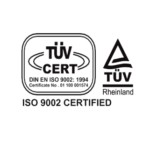Sign up for our newsletter to get information, news, insights, and promotional updates.
Company
Get in touch
- +92 - 42 357 101 48
- +92 - 42 357 534 02
- [email protected]
- Sardar Chemical Industries Ltd 2-A Justice Sardar Iqbal Road, Gulberg V, Lahore, Punjab.
Copyright © 2023Sardar Chemical Industries Ltd. All rights reserved.





